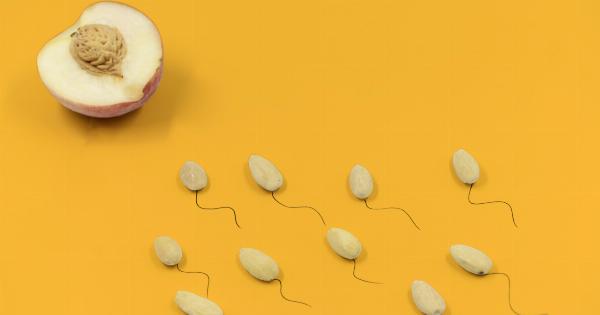Healthy sperm is vital for male fertility and plays a crucial role in achieving pregnancy.
Understanding the common attributes of healthy sperm can help individuals and couples make informed decisions and take necessary steps to improve their chances of conception. In this article, we will explore the key characteristics of healthy sperm.
1. Sperm Count
Sperm count refers to the number of sperm cells present in a given semen sample. The average sperm count ranges from 15 million to more than 200 million sperm cells per milliliter.
A healthy sperm count is essential for fertility as it increases the chances of fertilizing the egg during intercourse.
2. Sperm Motility
Sperm motility refers to the ability of sperm cells to move and swim through the female reproductive system towards the egg.
High motility is an important attribute of healthy sperm as it allows them to navigate the vaginal canal, cervix, and fallopian tubes to reach the egg for fertilization.
3. Sperm Morphology
Sperm morphology refers to the size and shape of sperm cells. Healthy sperm typically have an oval-shaped head and a long tail, which enables them to penetrate the outer layer of the egg for fertilization.
Abnormalities in sperm morphology can interfere with fertilization and reduce the chances of pregnancy.
4. Sperm Volume
Sperm volume refers to the amount of semen ejaculated during ejaculation. A healthy sperm volume is important as it helps in the transport and protection of sperm cells.
Insufficient sperm volume may lead to dilution of sperm cells and a decreased chance of successful fertilization.
5. pH Level
The pH level of semen plays a crucial role in maintaining a suitable environment for sperm survival. The normal pH level ranges from 7.2 to 8.0, which is slightly alkaline. An imbalance in pH levels can affect sperm function and reduce fertility.
6. Semen Viscosity
Semen viscosity refers to the thickness or stickiness of semen. Normal semen should have a fluid consistency that allows for easy movement of sperm. If semen is too thick, it can impede sperm motility, reducing the likelihood of successful fertilization.
7. DNA Integrity
Healthy sperm should have intact DNA to ensure the genetic material required for fertilization is properly preserved. Damaged DNA in sperm cells can lead to genetic abnormalities in offspring or even prevent fertilization altogether.
8. Absence of Infections
Healthy sperm should be free from any sexually transmitted infections or other bacterial or viral infections. Infections can negatively impact sperm production, motility, and overall fertility.
9. Proper Forward Progression
Forward progression refers to the straight-line movement of sperm towards the egg. Healthy sperm demonstrate strong forward movement, enabling them to navigate through the female reproductive tract efficiently.
10. Normal Vitality
Vitality refers to the overall health and viability of sperm cells. Healthy sperm should exhibit normal vitality, indicating that they are capable of surviving in the female reproductive system and fertilizing the egg.





























